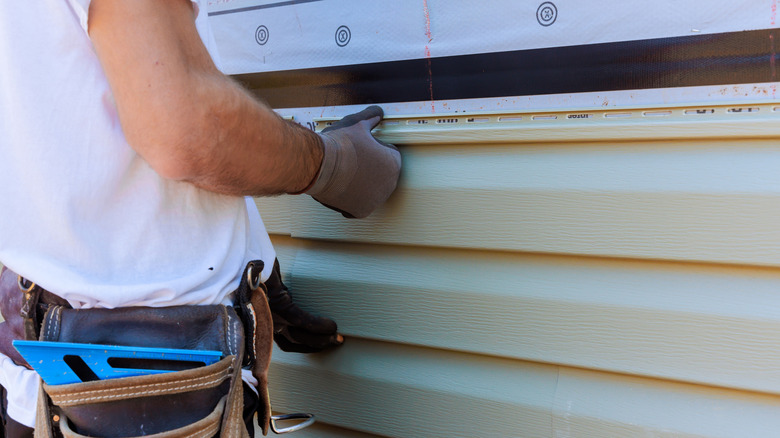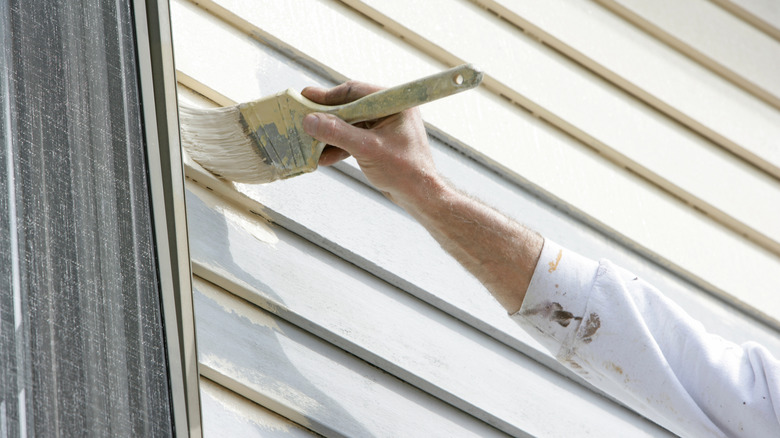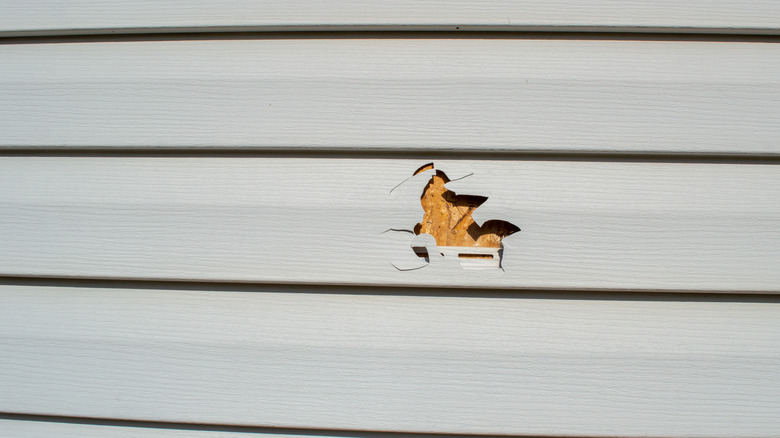Downsides That May Make You Reconsider Vinyl Siding
Vinyl siding is the most utilized siding option available when building a home, and considering the big advantages it offers, it's not surprising that so many homeowners choose it. For one, vinyl siding offers great water-resistance, as it won't absorb water like other materials such as wood. It's also easy to install and — even better — easy to fix:replacing vinyl siding panels is a wonderfully straightforward process. There are many siding colors available with vinyl, so there's some initial flexibility with the design (at least, when you first install it), and as everyone knows, the cost of vinyl siding comes out at the best price point when compared to other siding options, so it's an attractive choice for those who are interested in saving money.
Despite these big advantages, there are some major downsides to vinyl siding, as well, since it lacks in a couple of key areas including durability and long-term flexibility. It's important to understand these downsides when choosing a siding option to ensure you aren't disappointed with your choice.
The appearance of vinyl siding isn't easy to change
When it comes to the appearance of vinyl siding, there's a significant lack of customizing available once you've made your initial selection. Although there are various color options available to choose from during install, it's not easy to change its appearance afterward. Painting vinyl siding after installation is possible, but it can cause problems if not done right. You'll need to choose the paint type and color carefully and apply it correctly. Darker colors, for example, have issues with excess heat that can cause them to become messed up more easily than lighter colors would. It can also be difficult to achieve the perfect look when painting vinyl siding, especially when doing it DIY.
Keep in mind that once you paint vinyl siding, you won't be able return to the exact look that you chose during installation. In some cases, a manufacturer's warranty may also be voided if you paint vinyl siding, so keep this in mind to avoid potential problems later on.
Vinyl siding lacks durability
One of the top disadvantages of vinyl siding, though, is that it isn't the most impervious to damage. It can break easily if something hits it with force, and every break or crack exposes your home to the dangers of water damage. The color of vinyl siding may also fade with enough direct sunlight over time, though as mentioned before, this issue is more likely to occur with dark colored vinyl siding, and heat also can cause issues with warping. When it comes to extreme cold, cracking is something to be wary of, as well.
That said, while vinyl isn't the most durable option available, it is more durable than aluminum siding. On the other hand, it's a bit lacking in comparison to fiber cement siding, which stands up much better in adverse weather conditions and isn't prone to bending and warping. All in all, while vinyl siding has drawbacks, there are a lot of benefits to it, so be sure to consider both the durability and flexibility aspects carefully when trying to choose the right siding for your home.


